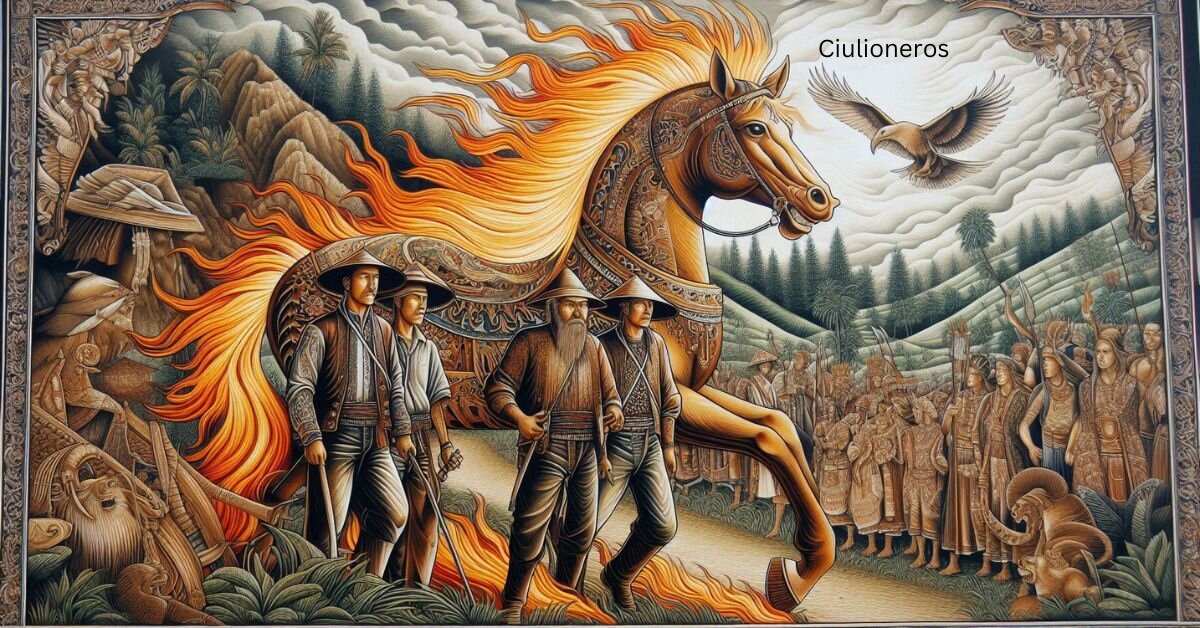Nestled in the heart of Peru, Masonpisco is not just a spirit; it’s a celebration of tradition, culture, and craftsmanship. This beloved drink has captured the hearts of locals and visitors alike with its unique flavors and rich history. As you take your first sip, you’re transported to sun-kissed vineyards and artisanal distilleries where generations have perfected the art of pisco-making. Join us on this journey as we delve into what makes Masonpisco so special—a true emblem of Peruvian heritage that deserves to be explored and celebrated.
Read More: Exploring Weisenkooben: A Hidden Gem You Need to Visit
The History and Origins of Pisco in Peru
Pisco’s roots trace back to the 16th century when Spanish colonizers brought grapevines to Peru. The fertile valleys provided an ideal environment for viticulture.
As wine production grew, distillation techniques evolved. By the late 1700s, pisco emerged as a distinct spirit, crafted mainly in the regions of Ica and Arequipa. Its name derives from the Peruvian port town of Pisco, where it was first exported.
The traditional methods used in crafting pisco reflect centuries of artisanal expertise. Local producers still rely on time-honored practices that celebrate their heritage.
During the War of Independence in the early 19th century, pisco became a symbol of national identity and pride among Peruvians. This connection solidified its place within not just local culture but also global appreciation for fine spirits today.
The Distillation Process of Pisco
The distillation process of pisco is a labor of love. It begins with carefully selected grapes, typically from the regions of Ica and Moquegua in Peru. These grapes are crushed to release their juice, which then ferments into wine.
Once fermentation is complete, the magic happens. The wine undergoes double distillation in traditional copper pot stills. This method enhances purity while preserving flavor profiles unique to each grape variety used.
As it boils, vapors rise and condense back into liquid form. Distillers monitor temperatures closely for optimal results. Only the heart cut—where flavors shine brightest—is collected for maturation.
Pisco’s clarity is remarkable; no additives or aging in wood barrels alters its essence. Instead, it captures the spirit of Peruvian terroir beautifully. Each drop reflects craftsmanship honed over generations, making every sip an experience worth savoring.
Variations of Pisco and Their Unique Flavors
Pisco comes in various styles, each boasting its own distinct flavor profile. The two main types are Pisco puro and Pisco acholado.
Pisco puro is crafted from a single grape variety, showcasing the unique characteristics of that specific fruit. For instance, Quebranta grapes create a smooth spirit with earthy notes.
On the other hand, Pisco acholado blends multiple grape varieties to achieve complexity. This results in an intriguing balance of flavors—think floral aromas combined with fruity undertones.
Then there’s the rare Pisco mosto verde, made from partially fermented grape juice. This type delivers a sweeter taste and richer texture, often highlighted by herbal notes.
Each variation reflects regional differences and artisan techniques. Tasting them reveals not just different flavors but also stories woven into every bottle of Masonpisco.
Popular Cocktails Made with Pisco
Pisco shines brightly in the world of cocktails, bringing a unique flair to mixology. One of the most iconic drinks is the Pisco Sour. This refreshing concoction blends pisco, fresh lime juice, simple syrup, and egg white for a frothy finish.
Another delightful option is the Chilcano. With its crisp flavor profile, it combines pisco with ginger ale and freshly squeezed lime juice. It’s perfect for warm weather gatherings.
For those seeking something fruitier, try a Pisco Punch. This vibrant cocktail mixes pisco with pineapple juice and sweetener, creating a tropical experience that’s hard to resist.
Don’t overlook the versatility of Pisco Negroni either; it adds an interesting twist to this classic by replacing gin with pisco while maintaining that beautiful balance of bitter and sweet flavors.
Each cocktail showcases how Masonpisco can elevate your drinking experience through creativity and tradition.
Pairing Pisco with Peruvian Cuisine
Pisco’s vibrant flavors make it a superb companion for Peruvian cuisine. The spirit’s aromatic complexity enhances traditional dishes, creating an unforgettable dining experience.
Consider pairing Pisco with ceviche. The citrus notes in the drink complement the fresh fish and tangy marinade beautifully. This combination dances on the palate, elevating both elements of the meal.
For heartier selections like lomo saltado, a robust pisco sour can enhance savory flavors. Its sweetness balances out the dish’s spices and richness perfectly.
Don’t overlook dessert options either! A refreshing Pisco punch pairs wonderfully with classic Peruvian treats such as alfajores or tres leches cake, providing a delightful contrast that rounds out any meal.
Exploring these combinations highlights how Masonpisco can transform your culinary adventures while celebrating Peru’s rich gastronomic heritage.
The Cultural Significance and Traditions around Pisco
Pisco is more than just a spirit; it’s a celebration of Peruvian culture. Deeply rooted in the identity of the nation, Pisco brings friends and families together during festivals and special occasions.
Traditions surrounding Pisco date back to colonial times. The grape harvest season, or “cosecha,” transforms into lively gatherings where people share stories over glasses of this iconic drink.
The annual Pisco Sour Day highlights its significance, with events showcasing local distillers and cocktail enthusiasts alike. This vibrant festivity honors one of Peru’s most famous cocktails while promoting artisanal producers.
Additionally, rituals such as “el brindis” hold great importance. Toasting with Pisco symbolizes goodwill and unity among participants, reinforcing bonds between generations.
Through music, dance, and culinary experiences centered around this spirit, the cultural tapestry of Peru continues to thrive in every sip of Pisco.
Sustainability and Fair Trade Practices in the Pisco Industry
Sustainability is becoming increasingly important in the pisco industry. Producers are recognizing their role in protecting Peru’s rich agricultural heritage.
Masonpisco distilleries often embrace eco-friendly practices. They prioritize organic farming methods that eliminate harmful pesticides and promote soil health. This not only benefits the environment but also enhances the quality of grapes used for distillation.
Fair trade principles are also gaining traction. Many pisco makers ensure that grape farmers receive fair wages and support community development projects. This fosters a sense of solidarity among those involved in the production process.
By incorporating sustainable techniques, Masonpisco contributes to preserving traditional craftsmanship while safeguarding future generations’ access to this cherished spirit. Embracing these values elevates both flavor and ethical standards within the industry, making each sip carry a story of care and responsibility behind it.
Exploring Masonpisco Distilleries in Peru
Exploring Masonpisco distilleries in Peru is a journey into the heart of tradition. Each distillery showcases its unique flair, reflecting the rich heritage of pisco production.
In regions like Ica and Arequipa, you’ll find family-run establishments steeped in history. The warm hospitality of local producers invites visitors to witness age-old techniques passed down through generations.
As you wander through lush vineyards, you’ll discover the meticulous care that goes into growing each grape variety. The craftsmanship shines during tastings where flavors burst on your palate, revealing hints of caramel or floral notes.
Many distilleries offer guided tours complete with sensory experiences. You can savor fresh pisco paired with artisanal cheeses and local delicacies. This immersive experience truly brings the spirit to life.
Every visit captures a piece of Peru’s soul—a vibrant culture intertwined with craft and community dedicated to preserving their beloved Masonpisco.
Conclusion
Masonpisco embodies the heart of Peru’s culture and tradition. Its rich history, unique flavors, and artisanal craftsmanship make it a standout spirit in the global market.
As you explore the world of Masonpisco, you’ll discover diverse variations that cater to every palate. Whether sipped neat or mixed into cocktails, its versatility shines through.
The commitment to sustainability and fair trade practices shows a deep respect for both the land and its people. This dedication ensures that future generations can enjoy this cherished spirit.
Visiting distilleries offers an immersive experience into Pisco production. You’ll witness passion poured into every bottle while connecting with local traditions.
Masonpisco is not just a drink; it’s a journey through Peru’s landscapes and cultures. Each sip tells a story waiting to be discovered by all who appreciate fine spirits.
FAQS ( frequently asked questions )
FAQs (Frequently Asked Questions)
What is Masonpisco?
Masonpisco is a premium brand of pisco, Peru’s iconic grape-based spirit. It’s renowned for its smoothness and rich flavors, reflecting the craftsmanship behind traditional distillation methods.
How is pisco different from other spirits?
Pisco stands out due to its unique production process and ingredients. Unlike many spirits that are distilled multiple times, quality pisco undergoes single distillation using specific Peruvian grapes. This method preserves the original characteristics of the fruit.
What types of grapes are used in making Masonpisco?
Masonpisco uses several native grape varieties such as Quebranta, Torontel, and Italia. These grapes contribute distinct flavor profiles to each type of pisco produced.
Can I drink pisco straight or only in cocktails?
You can enjoy Masonpisco both ways! Sipping it neat allows you to savor its complex flavors while mixing it into cocktails offers a refreshing twist with various mixers.
What food pairs well with Pisco?
PISCO complements a variety of Peruvian dishes like ceviche, lomo saltado, and causa limeña. The spirit enhances the meals’ flavors beautifully.
Is there a difference between Puro and Acholado types of PISCO?
Yes! Puro refers to piscos made from one specific variety of grape. In contrast, Acholado blends two or more types for unique flavor combinations.
Does Masonpisco use sustainable practices in production?
Absolutely! Many producers emphasize sustainability by using organic farming techniques and practicing fair trade principles within local communities when producing their products.
Where can I buy Masonpisco outside Peru?
Many online retailers specialize in international shipping for liquor brands like Masonpisco. You might also find them at specialty liquor stores across various countries.













Leave a Reply